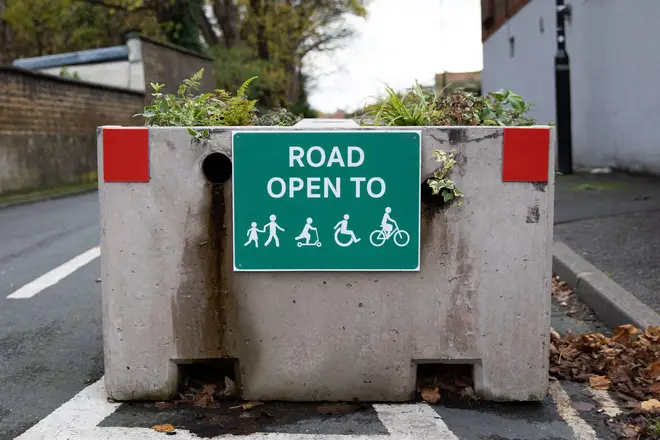
Ian Payne 4am - 7am
19 September 2021, 09:32
- Ealing council axes 7 LTN's after a public outcry
- They were found to have increased traffic on surrounding streets
- They also made 'no material change' to air quality

A London council has scrapped seven of its low-traffic neighbourhoods (LTNs) after finding that they made no difference to air quality and angered the majority of residents.
The council have encountered fierce public opposition to the scheme, and has found that they increase traffic on neighbouring roads.
Ealing council analysed nine low-traffic schemes one year after they were introduced.
They found that seven LTNs saw "no material change in air quality", and in one LTN in Acton traffic increased in the area.
Although five of the LTNs did result in a reduction in traffic, the council noted that they also increased congestion on surrounding streets.
Read more: Low Traffic Neighbourhoods: What are they and why are they so controversial?

Caller's scathing assessment of low-traffic neighbourhoods
Ealing council's report said: "There are no schemes where the overall impact in terms of traffic/congestion and air quality are significant either positively or negatively.
"Given this, it is considered that the views of local residents within the LTNs, and therefore most directly impacted by the schemes, are particularly important in terms of deciding whether or not the LTNs should remain or be removed."
A spokesman for One Ealing, a group opposed to the LTN's, said: "Over the last 12 months, we have repeatedly pointed out that the vast majority of residents were opposed to them, only to be told that this was a ‘vocal minority’ – this fallacy has now been proven utterly false, through numerous surveys. We are pleased the majority have finally been heard.”
The UK government has previously claimed that LTNs are popular with residents and have praised them as effective in persuading the public to use public transport instead of private vehicles.
But Ealing Council found that between 63% and 79% of residents living inside LTNs were opposed to them.
In Acton, where traffic increased under the scheme, 82% of residents within the area were opposed to it, with 92% of those living on boundary roads against LTNs.
Read more: Low Traffic Neighbourhoods have 'made it harder' for police to respond to emergencies

Campaigner insists drivers are behind LTN being abolished
The schemes have also been criticised for increasing the amount of time it takes for emergency services to respond to incidents.
In April over 2,000 people protested in front of Ealing town hall after Transport Secretary Grant Shapps announced millions of pounds of funding for the schemes.
Ealing Council will keep two other LTNs which saw approval ratings of 70% and 61% respectively.
Read more: London's 'Low Traffic Neighbourhood cycle lanes are health disaster,' says taxi driver
A spokesman for Ealing Council told the Telegraph the council is "delivering an ambitious programme of active travel," in part to help tackle the climate crisis.
He added the local authority would "listen to local people’s views.
"As an open, transparent and inclusive council, we will continue to explore future LTN schemes, but we will only be implementing them where we are satisfied that the data and public support them."